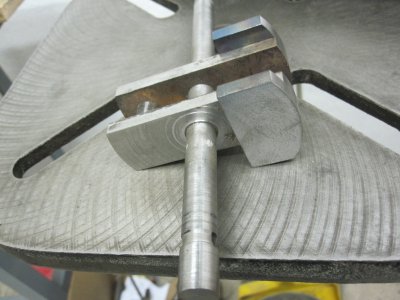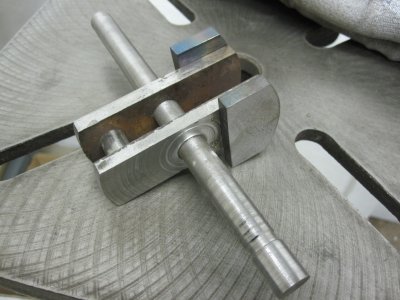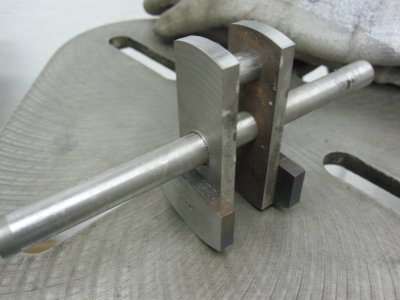My opinion is that there is no need for a cross-head on the piston valve. Even large engines ran with the valve connecting rod coupled directly to the valve stem.
The reasoning is that the valve rod is determined by the cylinder connecting rod and is forced to be longer than needed. Furthermore, the offset of the eccentric is less than the crank offset = less angle applied at the valve / rod connection. Piston valves require much less driving force than slider valves. So the total side load on the valve stem at mid stroke is quite small.
Some notes on piston valve design:
1) The "piston" needs to be a tight sliding fit in the valve bore. Large engines used complex system of rings and ring cages on the valve pistons, but every model I have ever seen relies on a close fit without any seals. So you need to plan on drill / bore / ream the bore. Leave extra length (mabe 2") on the valve stem so you have something to chuck when you lap the piston / bore to final size. Then carefully remove the excess length on the valve.
2) Materials: the housing with its bore is the most difficult part to make. So the valve piston was always designed to be the wear part. The valve is quick and easy to remove for inspection, and it is not too difficult to fabricate and re-fit a new one if the valve ever becomes to "leaky." I recommend a brass. Pick an alloy that is readily available. Get enough material to make several valve pistons in case you want to experiment with timing the engine and the expansion. Likewise, use a harder material for the valve body - but one that is easy to get a good internal finish. I would look at one of the "free machining" steels such as 10L18. This part will require some drilling and tapping for mounts, steam & exhaust and cylinder connections.
3) Basic design: there were many designs for piston valves with "balanced" load. Some were very complicated. For a model engine, I think the best is the "2 notch" design. It only requires 2 reliefs to be turned into the piston. The position of the reliefs as well as their widths determines the engine timing and expansion ration, so it is an exercise in accuracy to turn in these reliefs. Likewise in the valve body there are a number of holes drilled to connect to the A and B side of the cylinder, and to the steam and exhaust ports. All of these holes must be precisely located to achieve smooth operation. Larger diameter valve bores allows for shorter valve strokes, but it appears that the optimal point occurs in the range of valve bore = 30% of cylinder bore. If you try to make the stroke too short, it is difficult to accurately machine the very narrow piston valve reliefs required. I think you want to design the valve piston first (so it is easy to machine) and let that design determine the valve stroke (which determines the eccentric offset).
Terry S.




